
Priest (2011) is a dystopian action-horror film directed by Scott Stewart and based on the Korean comic series of the same name by Min-Woo Hyung.
“Priest” (2011) is a dystopian action-horror film directed by Scott Stewart, based on the Korean comic series by Min-Woo Hyung. Set in a bleak, alternate world where humanity has been engaged in a centuries-long war against vampires, the film blends elements of horror, action, and science fiction, creating a unique narrative that explores themes of faith, loyalty, and the struggle between good and evil.
The story takes place in a dystopian society governed by a theocratic church that wields absolute power. In this world, the remnants of humanity live in walled cities protected by the Church after a devastating war against vampires. These vampires are not the traditional seductive creatures of folklore but rather monstrous, savage beings. To combat this threat, the Church had trained a group of warrior monks known as Priests, highly skilled fighters with supernatural abilities granted to them by their intense faith and rigorous training.
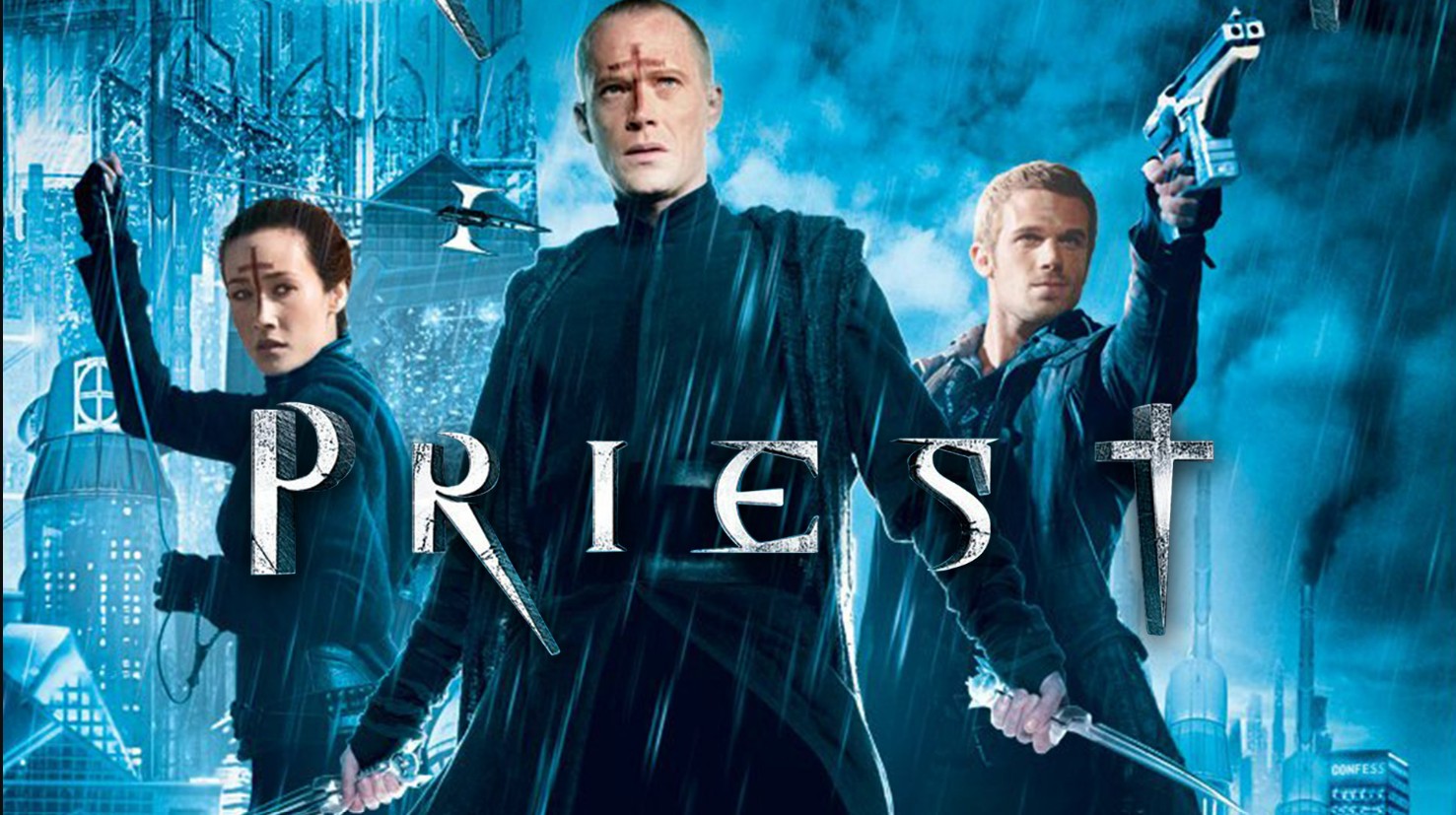
Paul Bettany stars as the nameless protagonist, referred to simply as “Priest,” a veteran of the vampire wars who now lives a quiet, reclusive life in the city, marked by his distinctive cross tattoo. The Priests have been disbanded by the Church following the war’s end, and their existence has been largely forgotten, deemed unnecessary by the ruling religious authority.
The plot kicks into action when Priest’s niece, Lucy (Lily Collins), is kidnapped by a group of vampires led by a mysterious and powerful figure known as Black Hat (Karl Urban). Black Hat, a former Priest himself, was turned into a vampire during a mission and now seeks revenge against the Church and its former comrades. He is the first human-vampire hybrid, granting him both vampire strengths and human intelligence, making him a formidable enemy.

Defying the Church’s orders to stay within the city walls, Priest sets out on a perilous mission to rescue Lucy and bring her captors to justice. Accompanying him is Hicks (Cam Gigandet), the local sheriff who is also Lucy’s boyfriend. The two set out across the desolate wastelands beyond the city, a lawless frontier populated by outlaws and infested with vampires. Along the way, they are joined by Priestess (Maggie Q), a fellow warrior with whom Priest shares a complicated history and a mutual respect.
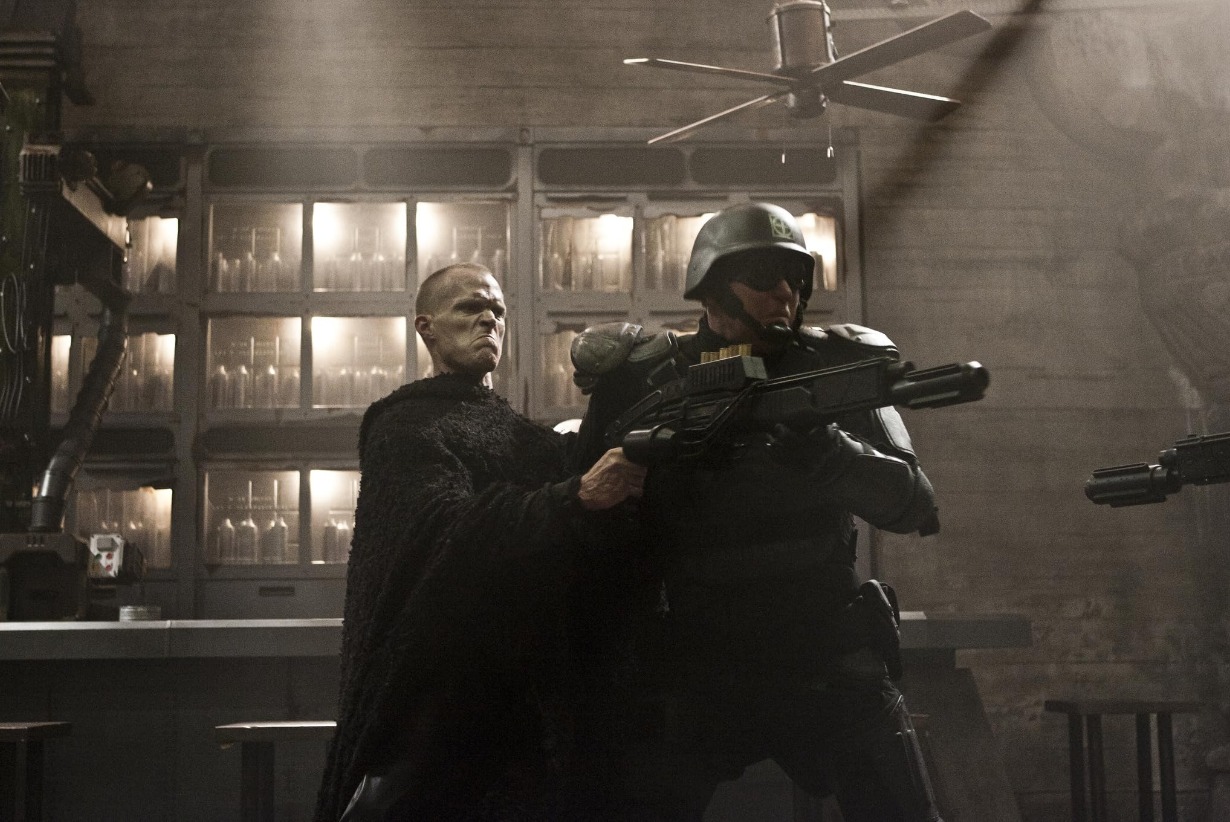
The journey is fraught with danger as they encounter numerous vampire hives and fight off vicious attacks. The film’s action sequences are intense and stylized, combining martial arts with gunplay and supernatural abilities, creating visually striking battles against the vampire hordes. The tension builds as they get closer to Black Hat’s lair, realizing that he is building an army to launch an all-out assault on the human cities.
The climax of “Priest” unfolds in a high-octane confrontation between Priest, his allies, and Black Hat’s forces on a speeding train bound for one of the walled cities. The film explores the conflicting themes of faith and doubt, loyalty and betrayal, as Priest faces his former brother-in-arms and grapples with his own crisis of faith. The battle is both physical and ideological, with Priest confronting the loss and disillusionment that came from the Church’s betrayal and Black Hat’s descent into darkness.
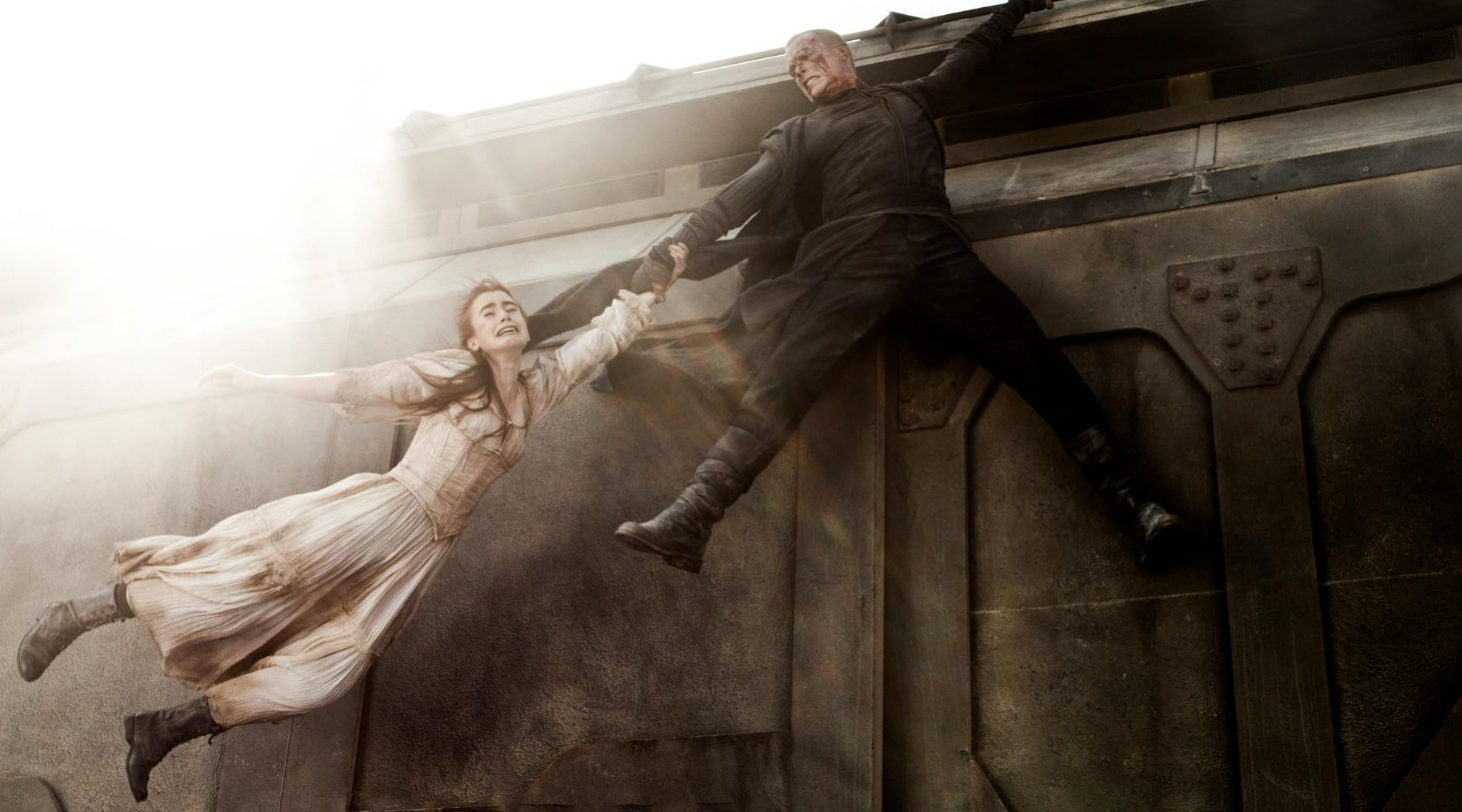
“Priest” is a blend of dystopian and supernatural elements, merging a post-apocalyptic setting with a dark, gothic horror aesthetic. It presents a world where the boundaries between human and monster are blurred, and the quest for redemption is fraught with moral ambiguity. The film is notable for its visually striking landscapes and action sequences, as well as its exploration of themes such as religious authority, faith, and the nature of evil.
Although “Priest” received mixed reviews for its narrative and character development, it remains a unique entry in the action-horror genre, offering a stylized, dark vision of a world where the fight against ancient evils is as much about battling external monsters as it is about confronting internal demons.

WATCH:
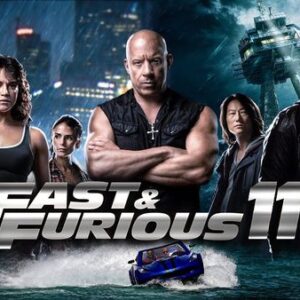
F9 (also known as Fast & Furious 9) is an upcoming American action film directed by Justin Lin, who also co-wrote the screenplay with Daniel Casey.
“F9” (also known as “Fast & Furious 9”) is a high-octane action film directed by Justin Lin, who returns to the franchise after previously directing four of its installments. Co-written with Daniel Casey, the film continues the saga of Dominic Toretto (Vin Diesel) and his team of skilled drivers and street racers as they face new and formidable threats while pushing the limits of speed, loyalty, and family.
The story picks up after the events of “The Fate of the Furious” (2017), with Dom Toretto now living a quiet life off the grid with his wife Letty Ortiz (Michelle Rodriguez) and their young son, Brian. However, Dom’s peaceful existence is shattered when his estranged brother Jakob Toretto (John Cena), a highly skilled assassin and master thief, emerges as a new enemy. Jakob, who has been working with a powerful and mysterious organization, harbors a deep grudge against Dom, stemming from unresolved family issues that have festered for years.

As Jakob threatens global security with a dangerous new weapon, Dom is forced to confront his past and reconcile with the painful memories of his fractured relationship with his brother. He assembles his team once again, including Letty, Roman Pearce (Tyrese Gibson), Tej Parker (Ludacris), Ramsey (Nathalie Emmanuel), and Mia Toretto (Jordana Brewster), who returns to the fold to help her brother Dom face their greatest challenge yet.
The film features a series of explosive action sequences that take the crew across the globe, from the streets of London and Tokyo to the jungles of Central America and a secret underground bunker in Eastern Europe. With high-speed chases, gravity-defying stunts, and intricate heists, “F9” raises the stakes in every way imaginable. The film also introduces magnet technology as a key element, leading to some of the most inventive car chases ever seen in the franchise, where vehicles are flung around like toys in a child’s sandbox.
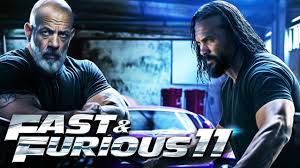
In addition to the main cast, “F9” brings back fan-favorite characters like Han Lue (Sung Kang), who was thought to be dead but makes a surprising return, adding another layer of intrigue and excitement to the plot. The film also features a new character, Queenie Shaw (Helen Mirren), and sees the return of Magdalene Shaw (Helen Mirren), the mother of Deckard (Jason Statham) and Owen Shaw (Luke Evans), further intertwining the narratives of the franchise’s broader universe.
As Dom and his crew race against time to stop Jakob and prevent a global catastrophe, they must rely on their bond as a family and their unparalleled driving skills. “F9” delves deeper into the themes of brotherhood, betrayal, and redemption, exploring how family ties can be both a source of strength and a cause of great pain.
The film culminates in an epic showdown between Dom and Jakob, filled with emotional confrontations and jaw-dropping stunts that test the limits of both human endurance and vehicular engineering. “F9” is not just an action film; it’s a celebration of the franchise’s enduring legacy, pushing the boundaries of what fans have come to expect from the “Fast & Furious” series.
“F9” promises to deliver a thrilling cinematic experience filled with the franchise’s signature blend of fast cars, intense action, and the unwavering theme of family, making it a must-watch for fans eagerly awaiting the next chapter in this beloved saga.
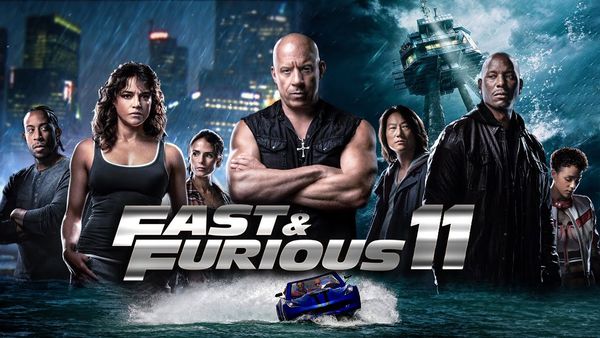
WATCH:
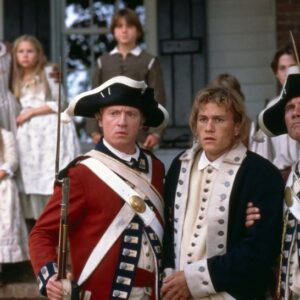
The Patriot (2000) “The Patriot” is a 2000 historical war film directed by Roland Emmerich, starring Mel Gibson, Heath Ledger, and Joely Richardson.
In the year 1776, as the American colonies teeter on the brink of war with Great Britain, Benjamin Martin, a veteran of the French and Indian War, finds himself torn between his reluctance to return to battle and his growing sense of duty to his fellow colonists. Widowed and raising his seven children on a sprawling plantation in South Carolina, Benjamin, played by Mel Gibson, wishes only for a peaceful life, far from the horrors of war.
However, the flames of revolution quickly reach his doorstep when the war comes to his home. Benjamin’s oldest son, Gabriel (played by Heath Ledger), is a fervent young patriot who enlists in the Continental Army against his father’s wishes. Gabriel’s youthful enthusiasm and passion for the cause of freedom are stark contrasts to Benjamin’s painful memories of past conflicts. Despite his father’s pleas, Gabriel’s resolve is unshaken.
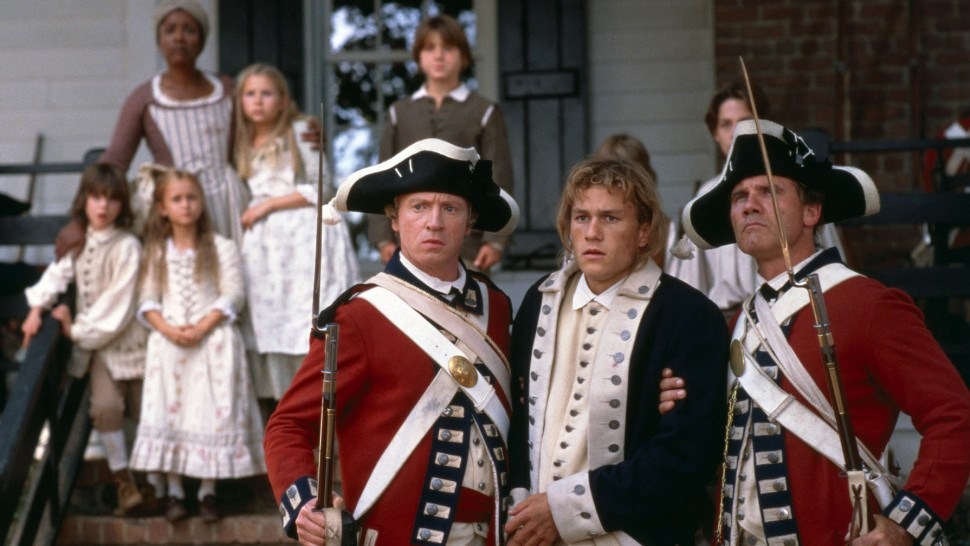
As the war intensifies, the brutal realities of the conflict are brought home in the most devastating way. A British officer, Colonel William Tavington, known for his ruthless tactics, arrives in South Carolina, enforcing a scorched-earth policy. In a horrifying attack, Tavington and his men burn down the Martin family home, killing Benjamin’s second son, Thomas, when he tries to save Gabriel, who has returned home wounded.
Grief-stricken and filled with a fury he thought long buried, Benjamin decides to act. Armed with only his tomahawk and his past experience as a soldier, he ambushes a British convoy transporting Gabriel. With the help of his younger sons, Benjamin brutally slaughters the British soldiers, revealing a dark, violent side of himself that shocks even Gabriel. This act of vengeance pulls Benjamin fully into the war he hoped to avoid.
Benjamin and Gabriel join a local militia, employing guerrilla tactics against the British. The militia’s cunning and surprise attacks disrupt supply lines and strike fear into the hearts of their enemies. As they fight side by side, father and son begin to bridge the gap created by their differing views on war. Gabriel comes to see the wisdom in his father’s caution, while Benjamin is reminded of the idealism and hope that fuels the fight for independence.

Throughout their campaign, the militia faces numerous challenges. Supplies are scarce, and their makeshift army consists of farmers, tradesmen, and other everyday colonists with little formal training. But their determination is unwavering. They are spurred on by Benjamin’s leadership, Gabriel’s passion, and a burning desire for freedom from British rule.
As the war rages on, personal sacrifices become inevitable. Gabriel falls in love with Anne Howard, the daughter of a local tavern owner, but their budding romance is cut short when Tavington razes their town, killing Anne and her family. Consumed by grief, Gabriel becomes reckless in his pursuit of Tavington, determined to avenge Anne’s death.
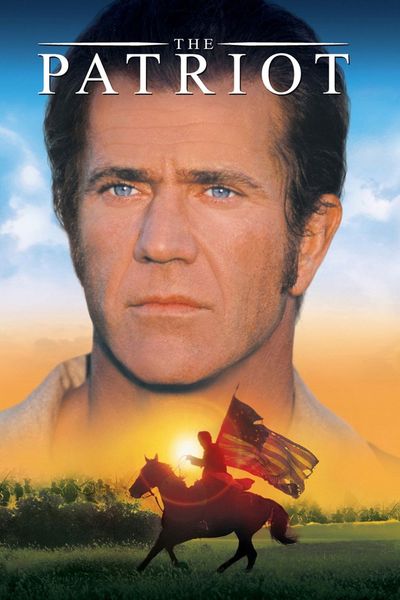
In a tragic turn, Gabriel’s quest for vengeance leads to his death in a skirmish with Tavington. Benjamin, now having lost two sons to the war, is devastated. He contemplates abandoning the fight, weighed down by the heavy cost it has exacted on his family. But his resolve is steeled by the sacrifices of those around him and the realization that his children’s deaths cannot be in vain.
In a climactic battle, Benjamin faces Tavington on the battlefield. Fueled by both grief and a desire for justice, Benjamin kills Tavington in a fierce hand-to-hand combat. The American militia, inspired by Benjamin’s courage and leadership, gains the upper hand, leading to a decisive victory against the British forces.
In the aftermath of the war, as the tide turns in favor of the Continental Army, Benjamin returns home to his remaining children. The war has taken a heavy toll on him, both physically and emotionally, but it has also reaffirmed his belief in the fight for freedom and the future of the new nation. As he begins to rebuild his home and his life, he embodies the resilience and spirit of a nation being born out of the ashes of conflict.
“The Patriot” is not just a tale of a man’s journey through war, but a profound exploration of the sacrifices made for freedom, the bonds of family, and the enduring human spirit in the face of unimaginable loss.
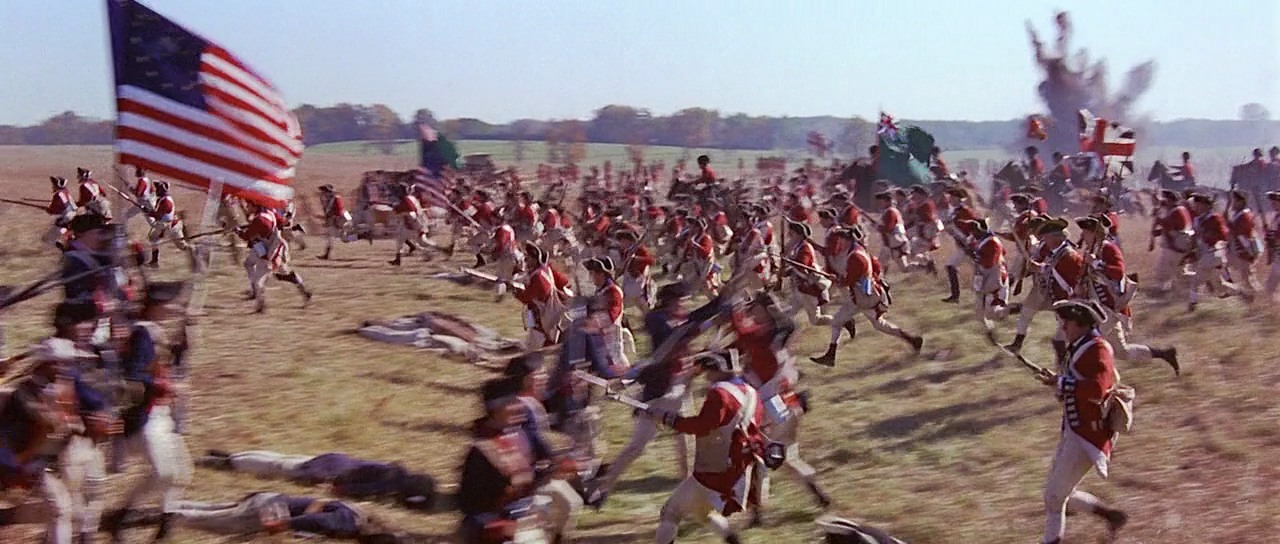
WATCH:
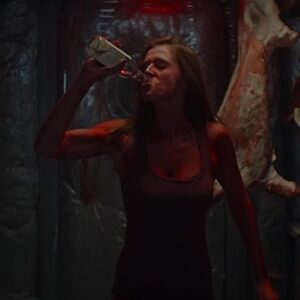
“Superdeep” (2020) is a Russian science fiction horror film directed by Arseny Syuhin.
“**Superdeep**” (2020) is a Russian science fiction horror film directed by Arseny Syuhin that delves deep into the unknown horrors lurking beneath the Earth’s surface. Set in the 1980s, the story is inspired by the real-life Kola Superdeep Borehole, a drilling project in the Soviet Union that penetrated over 12 kilometers into the Earth’s crust, the deepest artificial point on Earth.
**Plot Summary**
The film begins with an unsettling event: a group of scientists working at a remote research station in the Kola Peninsula are conducting experiments deep within the Earth’s crust. Suddenly, they are interrupted by eerie noises emanating from the depths of the borehole. Moments later, a scientist begins to show signs of a mysterious illness, his body covered in lesions and rapidly deteriorating. The station goes silent, and all communication is lost.
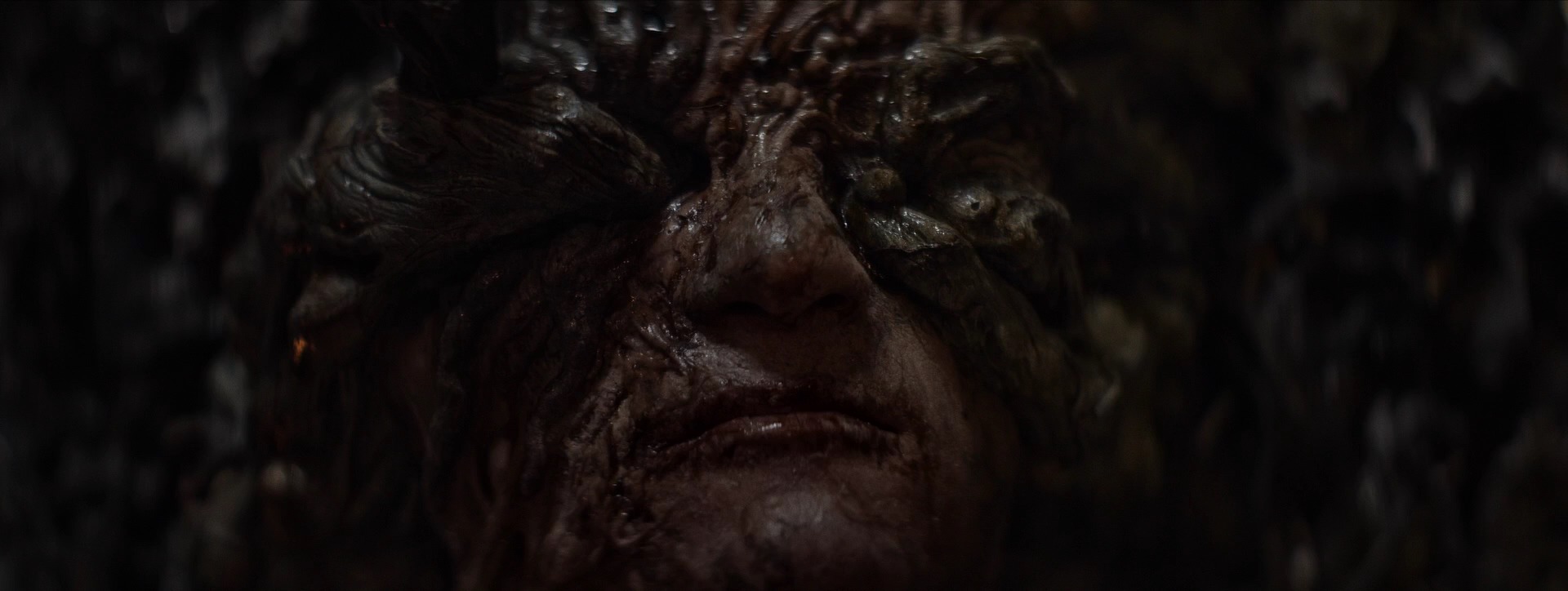
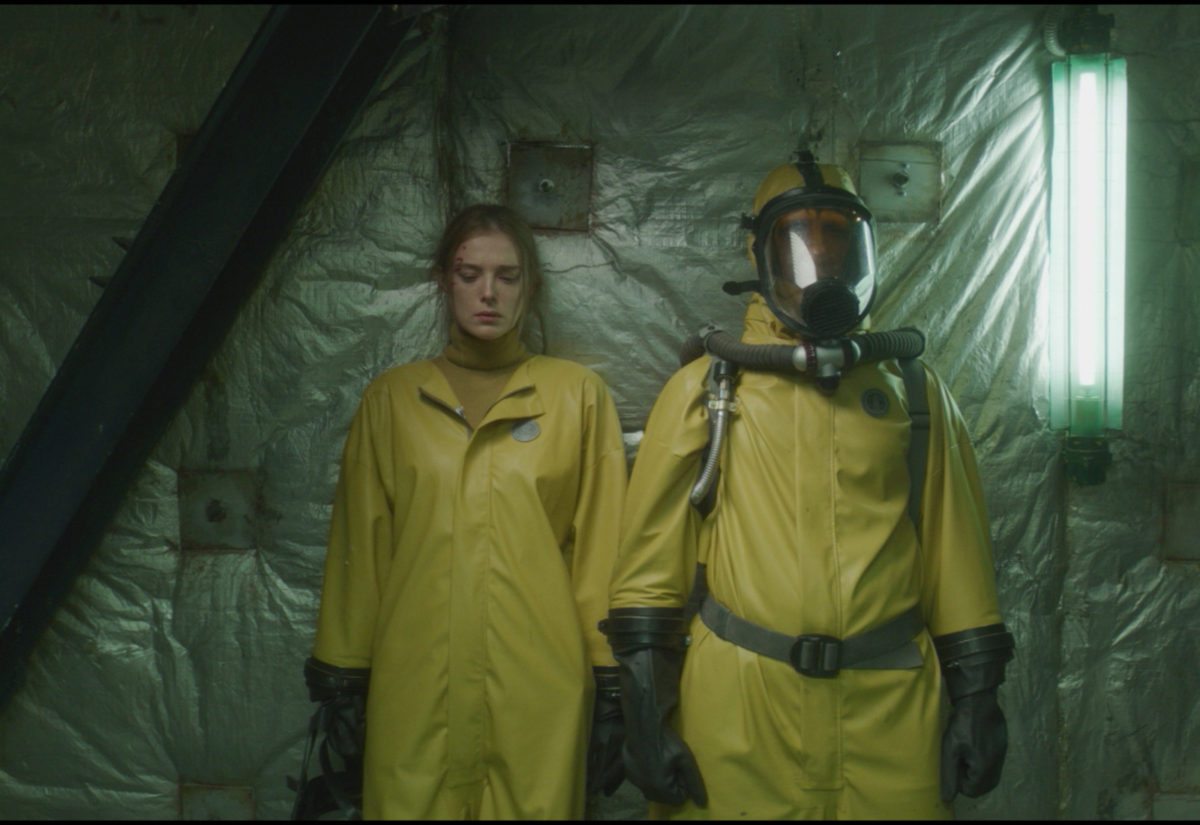
Dr. Anna Fedorova, a brilliant epidemiologist with a troubled past, is called in by the Soviet military to investigate the mysterious illness that has seemingly wiped out the research team. Reluctantly, she agrees, driven by a desire to redeem herself after a tragic incident during a previous assignment that resulted in the loss of lives. Accompanied by a team of soldiers and scientists, Anna embarks on a perilous journey to the remote station, unaware of the horrors that await them below.
Upon arrival, the team descends into the dark, cold depths of the borehole, where they quickly discover the abandoned remains of the research station. The deeper they go, the more apparent it becomes that the initial incident was only the beginning. They encounter the bodies of the previous team, grotesquely mutated and fused with the metal and walls around them, suggesting some horrific form of parasitic infection.
As they venture further into the superdeep borehole, they begin to experience hallucinations, terrifying visions that challenge their grip on reality. The team starts to unravel, paranoia sets in, and it becomes clear that something far more sinister than they could have imagined is lurking in the dark. They soon realize that the noise recorded at the borehole wasn’t just a geological anomaly—it was a distress call from something ancient and hungry, buried beneath the Earth for millennia.
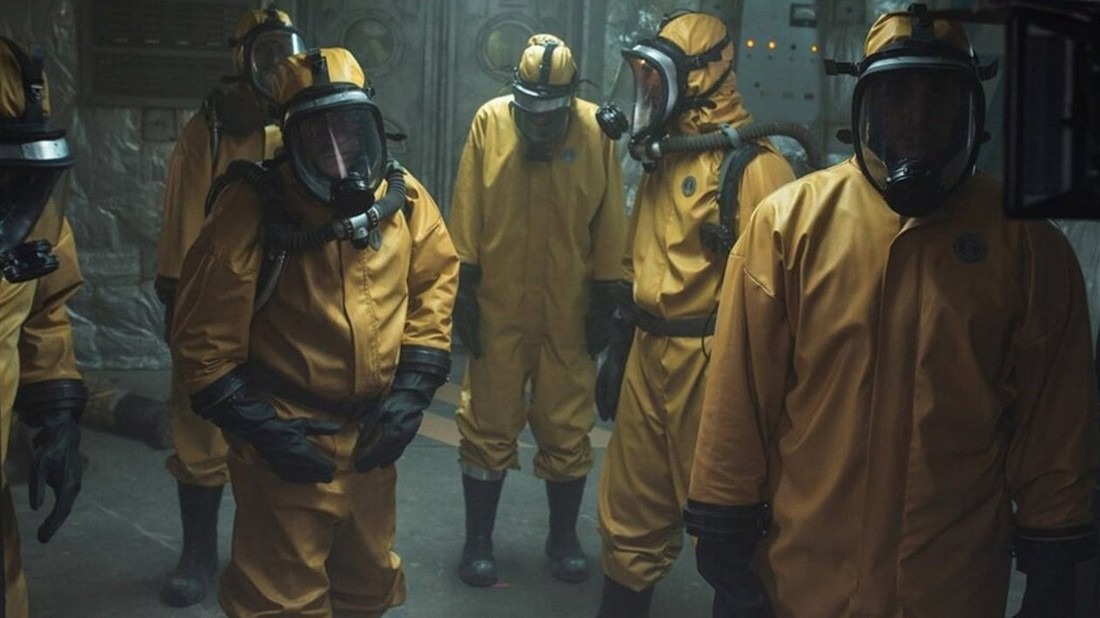
The infection begins to spread among the team members, revealing its horrifying nature: a rapidly mutating organism that invades the body, warping it into nightmarish forms. Anna, haunted by the past and driven by a need to make amends, must now confront her deepest fears. She has to find a way to contain the outbreak and ensure that whatever horrors lie beneath do not reach the surface.
As the situation grows more desperate, Anna discovers the truth: the borehole has tapped into a prehistoric microbial lifeform, a kind of proto-virus that can rewrite the genetic code of its host. This ancient virus has the power to transform its victims into grotesque, monstrous entities, blending organic and inorganic matter. The deeper they go, the closer they come to the core of the infection, where a vast network of these creatures awaits.

In a thrilling climax, Anna and the remaining survivors face off against the monstrous creatures born from the infected humans and animals within the depths of the Earth. Using the last of their resources, they set off a series of explosives to collapse the tunnel, sealing the creatures within and cutting off the infection’s path to the surface. Anna barely escapes with her life, but not without a deep sense of foreboding—knowing that the entity they encountered may not be the only one lying in wait beneath the Earth’s crust.
As Anna returns to the surface, bruised and battered but alive, the final haunting message of the film is revealed: there are places on this planet that humanity was never meant to explore. The deep is a place of ancient secrets and terrifying discoveries, a realm where science and the supernatural intersect, and where the true horrors of the unknown are yet to be discovered.
 WATCH:
WATCH:
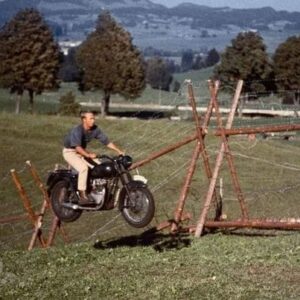
“The Great Escape,” directed by John Sturges and released in 1963, is a classic war film based on the true story of Allied
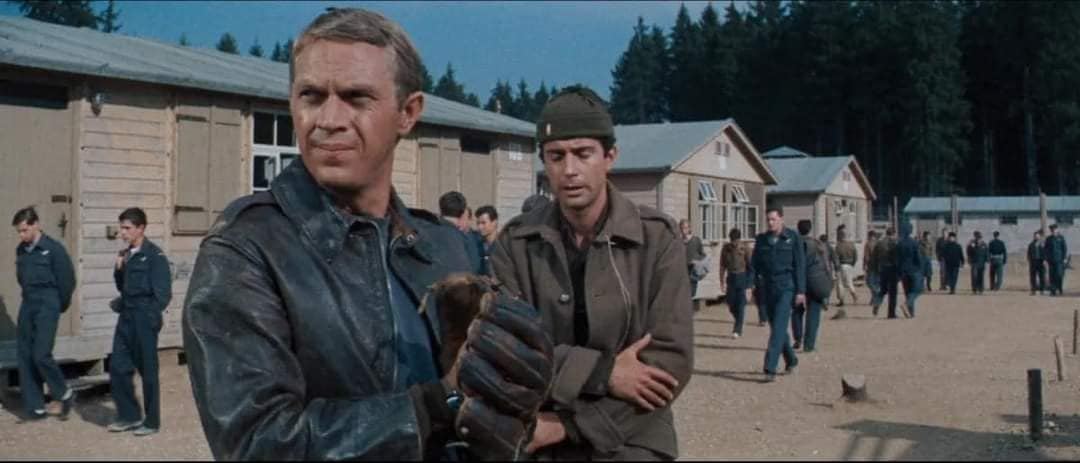

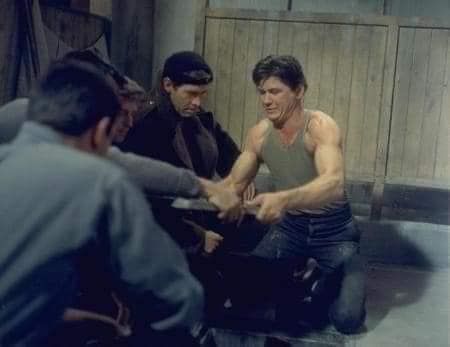

WATCH:

“The Wild Geese” is a 1978 British war film directed by Andrew V. McLaglen and based on the novel of the same name by Daniel Carney.
The Wild Geese is a 1978 British war film directed by Andrew V. McLaglen, based on the novel of the same name by Daniel Carney. The film tells the story of a group of mercenaries hired to undertake a daring mission in Africa, blending action, adventure, and camaraderie against a backdrop of political intrigue and danger.
Plot Summary
The story begins with Colonel Allen Faulkner (played by Richard Burton), a seasoned and respected British mercenary, being approached by a wealthy industrialist, Sir Edward Matherson (played by Stewart Granger). Matherson has a covert mission in mind: to rescue Julius Limbani (played by Winston Ntshona), a deposed African leader who is being held captive by a brutal dictator in Zembala, a fictional African country. Matherson believes that Limbani’s leadership could stabilize the region and protect his business interests.
Faulkner, intrigued by the challenge and the promise of a substantial payday, agrees to lead the operation. He assembles a team of old comrades, including Captain Rafer Janders (played by Richard Harris), a strategic planner with a son he deeply loves; Lieutenant Shawn Fynn (played by Roger Moore), a charming pilot with a ruthless streak; and Sergeant Major Sandy Young (played by Jack Watson), a tough-as-nails soldier with a heart of gold. Together, they recruit a diverse group of skilled mercenaries, all of whom have their reasons for taking on the mission.
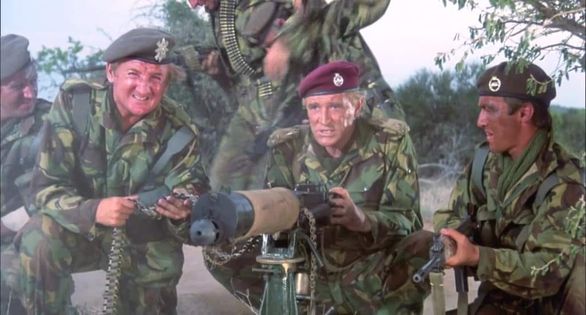
The Mission
The mercenaries, known as “The Wild Geese,” undergo rigorous training to prepare for their covert operation. The plan is to parachute into Zembala, liberate Limbani, and extract him safely out of the country before the regime’s forces can react. However, the mission is fraught with challenges. As they parachute into the African wilderness, they quickly encounter hostile terrain and enemy patrols.
Upon reaching the prison camp where Limbani is held, the team executes a well-coordinated assault, successfully freeing the leader. However, the mission takes a grim turn when they learn that the aircraft meant to extract them has been reassigned by Matherson, who has made a deal with the new regime in Zembala. The mercenaries are now stranded deep in hostile territory, betrayed and left to fend for themselves.
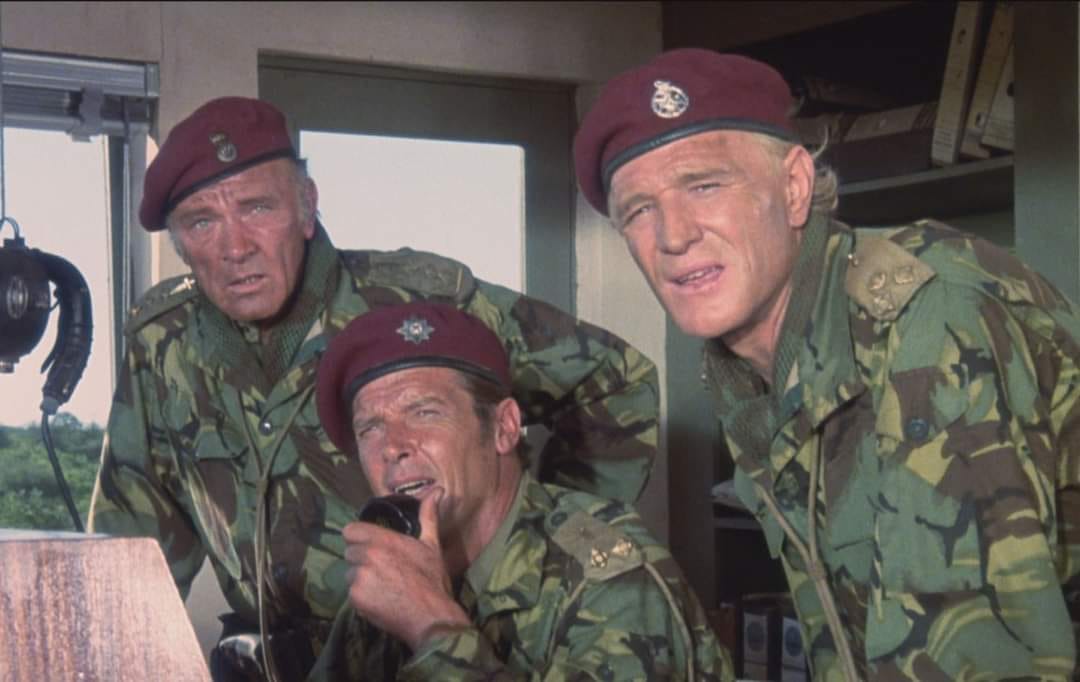
Survival and Betrayal
Realizing they have been double-crossed, Faulkner and his men must navigate through treacherous jungles and savannahs while being relentlessly pursued by Zembalan troops. As they fight for their survival, they face intense battles, suffering casualties and forming deeper bonds of camaraderie. Limbani, who was initially seen as just a political asset, begins to gain the respect and admiration of the mercenaries, especially Janders, who shares philosophical and personal moments with him.
The journey takes its toll on the group. As they near their breaking point, they encounter more betrayal when one of their own, coerced by fear and greed, attempts to sell them out. Despite the internal conflict, the remaining members push forward, determined to see the mission through, driven by a sense of duty and brotherhood.
Climactic Escape
As they near the border, the situation grows desperate. The group is reduced in number and strength, but their resolve remains unshaken. In a climactic showdown, they confront the pursuing Zembalan forces in a fierce firefight. Fynn sacrifices himself to buy the others time, showcasing his uncharacteristic but profound loyalty to his comrades. Meanwhile, Janders, gravely wounded, makes the ultimate sacrifice, allowing Faulkner, Young, Limbani, and a few surviving mercenaries to escape.
In the end, Faulkner and the remaining survivors manage to reach a safe airstrip where they commandeer a plane to escape, leaving behind a war-torn land and many fallen comrades. Back in London, Faulkner confronts Matherson, seeking retribution for the betrayal. In a tense confrontation, Faulkner delivers a stark warning before departing, a man forever changed by the mission and the losses endured.
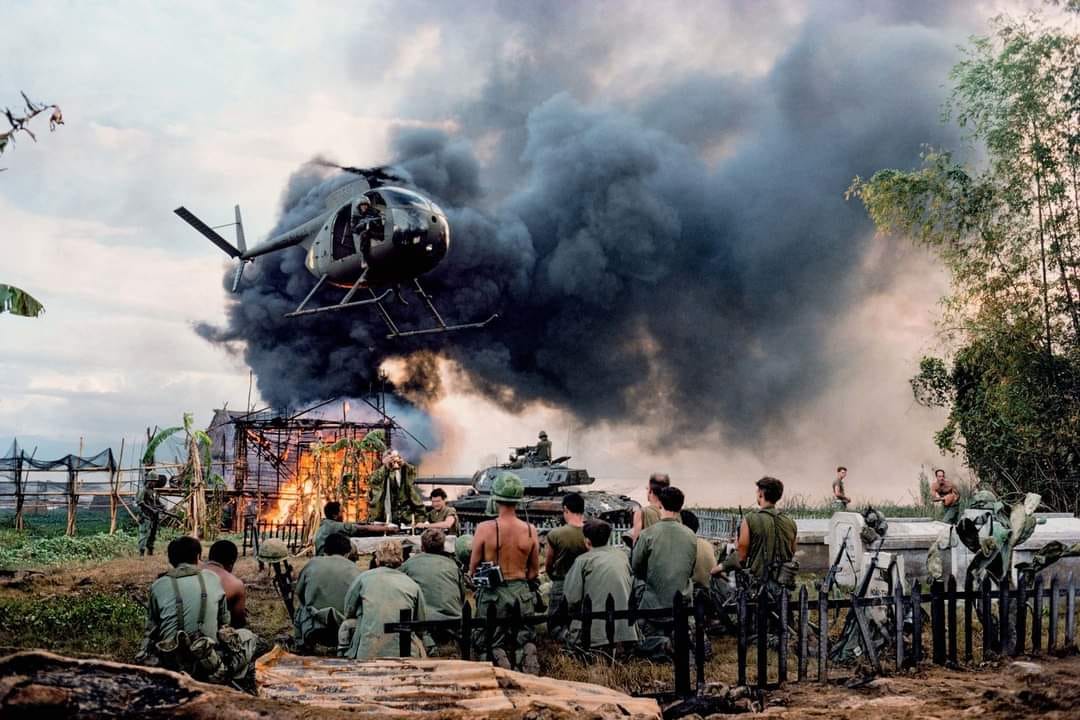
WATCH:
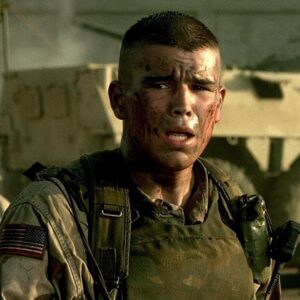
The film excels in its commitment to realism. Scott’s direction, combined with Slawomir Idziak’s dynamic cinematography, immerses viewers in the chaotic and brutal urban combat experienced by U.S.
It looks like you’re referring to the film “Black Hawk Down” (2001), directed by Ridley Scott. This film is renowned for its commitment to realism in depicting the harrowing events of urban warfare.
“Black Hawk Down” is a gritty war film based on the true story of the 1993 Battle of Mogadishu, where U.S. military forces engaged in a violent confrontation in Somalia. Ridley Scott’s direction, coupled with Slawomir Idziak’s dynamic cinematography, effectively immerses viewers in the chaotic and brutal urban combat experienced by the U.S. soldiers.

The film captures the intensity and unpredictability of modern warfare, where soldiers must navigate narrow streets and crowded markets under constant threat from enemy fighters. The cinematography uses handheld cameras and rapid editing to simulate the disorienting nature of battle, making viewers feel as if they are in the midst of the action. Scott’s dedication to realism is evident in the film’s detailed portrayal of military tactics, equipment, and the soldiers’ experiences.
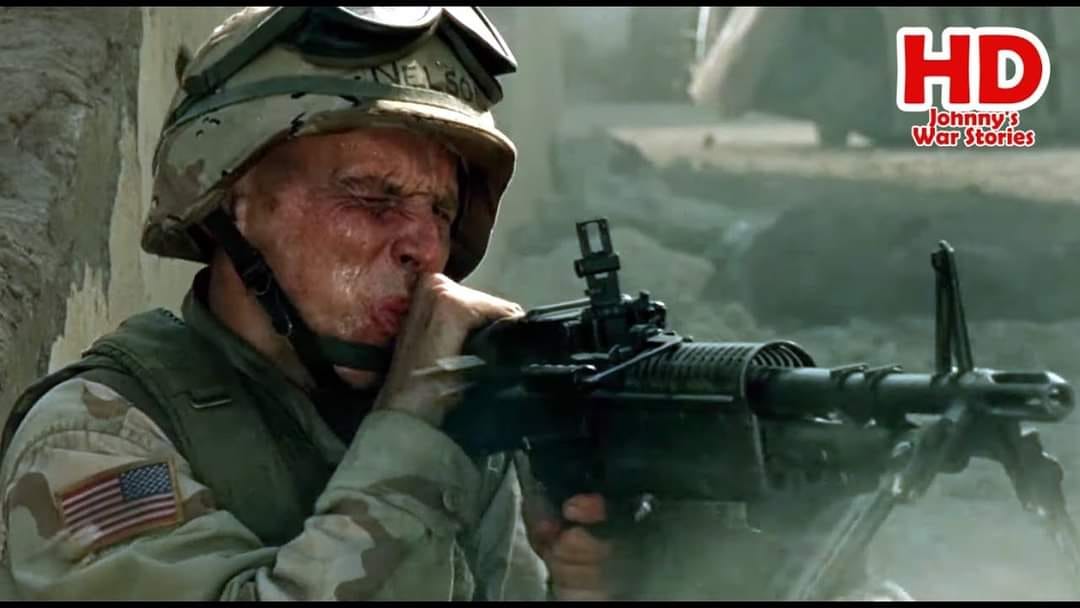
The performances by a talented ensemble cast, including Josh Hartnett, Ewan McGregor, Tom Sizemore, and Eric Bana, add depth to the portrayal of the soldiers’ bravery and camaraderie. The film also highlights the high-stakes decision-making and split-second judgments required in combat situations, emphasizing the relentless nature of urban warfare and its psychological toll on those involved.

Overall, “Black Hawk Down” stands out for its unflinching depiction of the complexities and horrors of war, showcasing the physical and emotional struggles faced by soldiers on the ground.
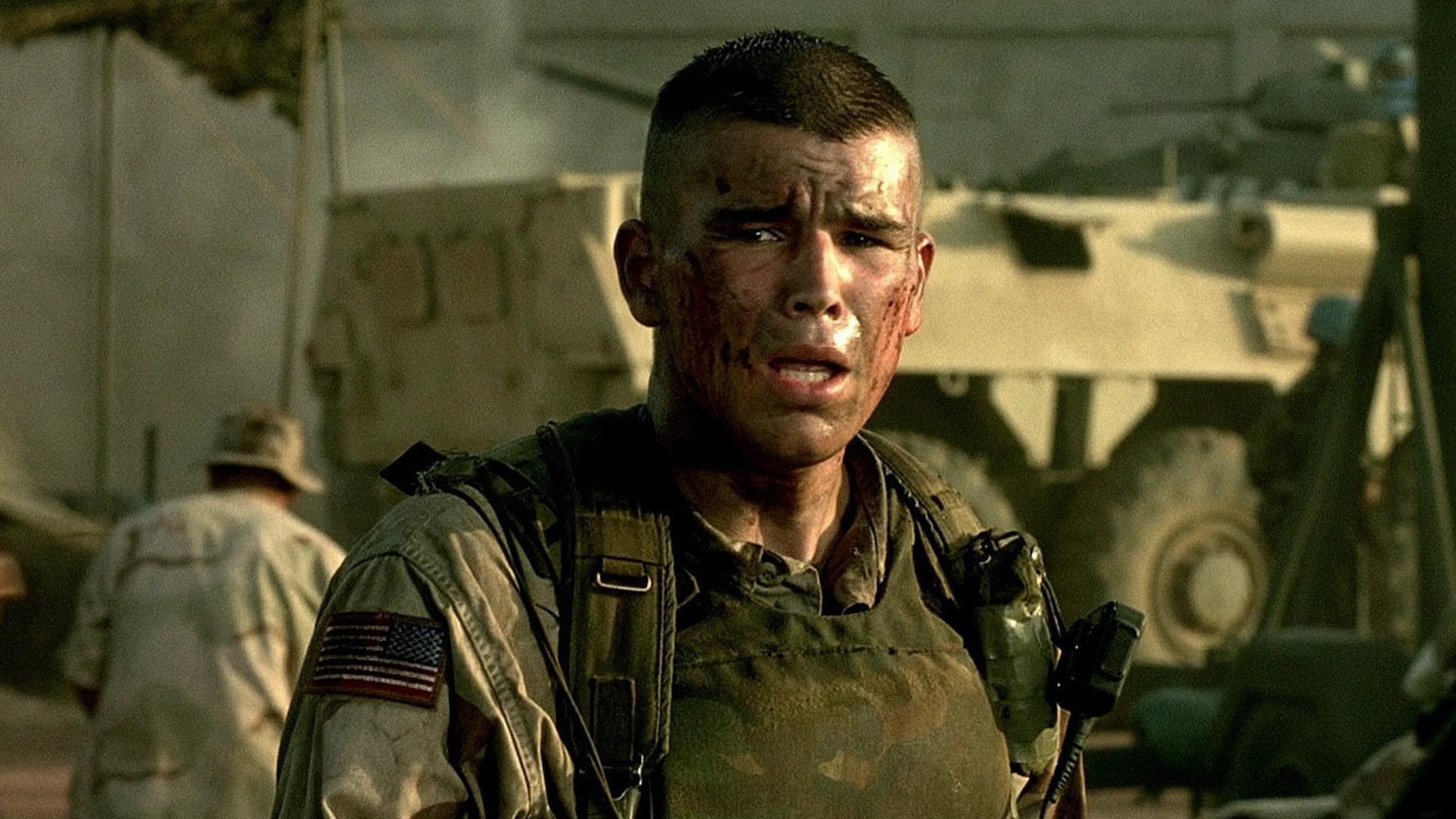
WATCH:
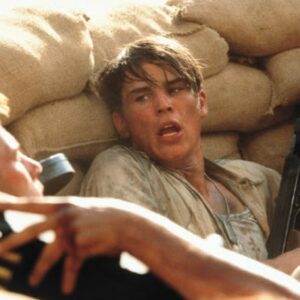
“Pearl Harbor” (2001), directed by Michael Bay, is a sweeping epic that recounts the events of the infamous 1941 attack on the U.S. naval base in Hawaii.
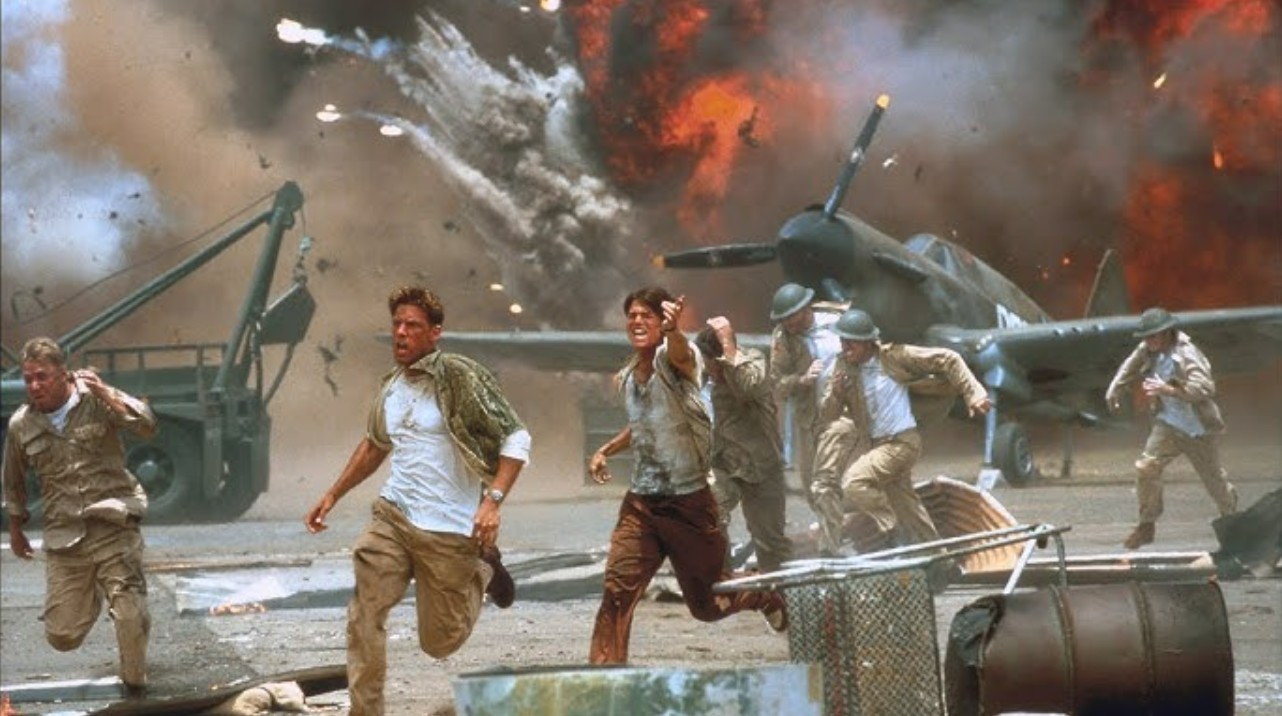
Rafe falls in love with Evelyn Johnson (played by Kate Beckinsale), a dedicated Navy nurse. Their love story is interrupted when Rafe volunteers to fight with the Royal Air Force in Britain, leaving Evelyn and Danny behind in Hawaii. When Rafe is reported missing and presumed dead after his plane is shot down, Evelyn and Danny find comfort in each other and develop a romantic relationship.
However, Rafe survives and unexpectedly returns to Hawaii, creating tension and emotional conflict between the three characters just as the tension between the United States and Japan is escalating.
The Attack on Pearl Harbor
The film’s centerpiece is the meticulously recreated attack on Pearl Harbor, which unfolds in a series of dramatic and intense sequences. On the morning of December 7, 1941, Japanese forces launch a surprise aerial attack on the U.S. Pacific Fleet stationed at Pearl Harbor. The attack is depicted with spectacular visual effects and high-intensity action, showcasing the devastation wrought by the Japanese bombers and fighter planes.
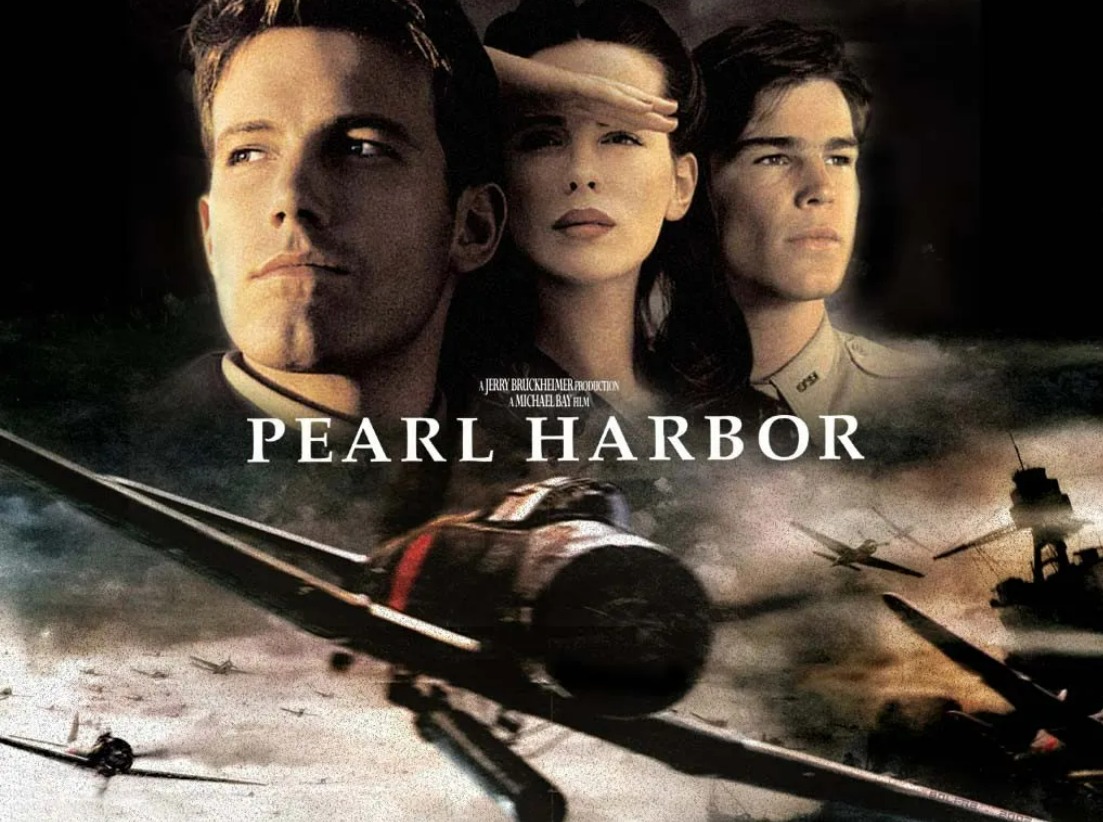
Bay’s direction captures the chaos and destruction of the attack, with scenes of exploding ships, burning planes, and heroic but ultimately futile attempts by American servicemen to repel the attack. The film emphasizes the bravery of the American soldiers, sailors, and airmen who fought back against overwhelming odds, as well as the tragic loss of life.
Rafe and Danny, despite their personal conflicts, spring into action during the attack, commandeering two fighter planes and managing to shoot down several Japanese aircraft. Their heroism is highlighted as they navigate the fiery skies above Pearl Harbor, trying to defend their fellow servicemen.

Aftermath and Doolittle Raid
In the aftermath of the attack, the United States enters World War II, and the story shifts to the Doolittle Raid, a daring bombing mission over Tokyo designed to boost American morale and demonstrate that Japan is within reach of American forces. Rafe and Danny volunteer for this high-risk mission, solidifying their commitment to each other and their country.
The Doolittle Raid is depicted with the same attention to detail and dramatic flair as the Pearl Harbor attack, showcasing the bravery of the pilots as they take off from aircraft carriers and fly toward Japan, knowing they may not have enough fuel to return.
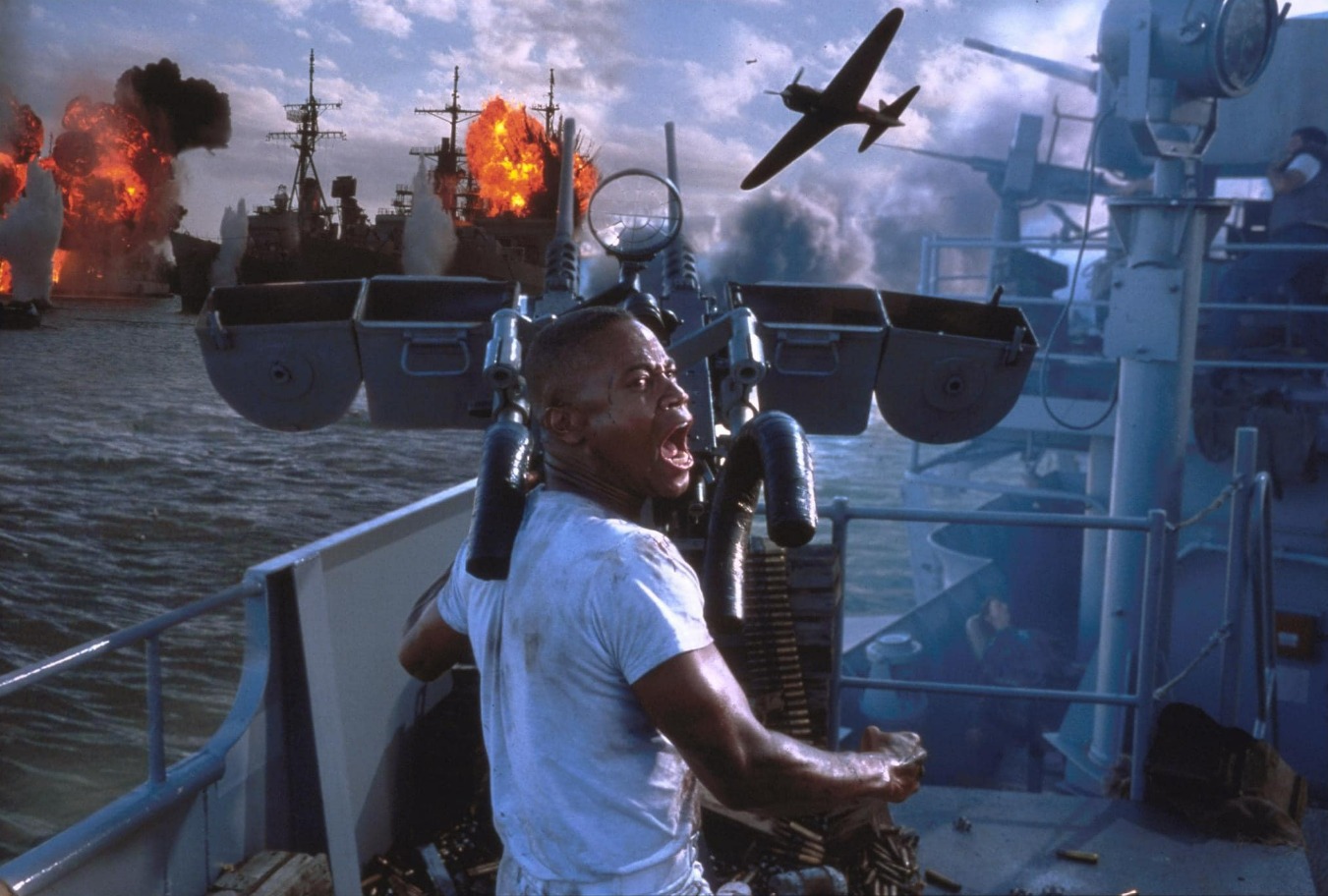
Themes and Reception
“Pearl Harbor” is both a love story and a war epic, blending fictional characters and relationships with historical events. The film explores themes of love, loss, friendship, and heroism against the backdrop of a nation at war. While it was praised for its special effects, action sequences, and historical attention to detail during the attack and subsequent battle scenes, the film also faced criticism for its length, melodramatic elements, and historical inaccuracies, especially concerning the romantic subplot.
Despite its mixed critical reception, “Pearl Harbor” was a commercial success and remains a notable entry in the war film genre, largely due to its spectacular visual effects and its depiction of one of the most pivotal moments in American history.
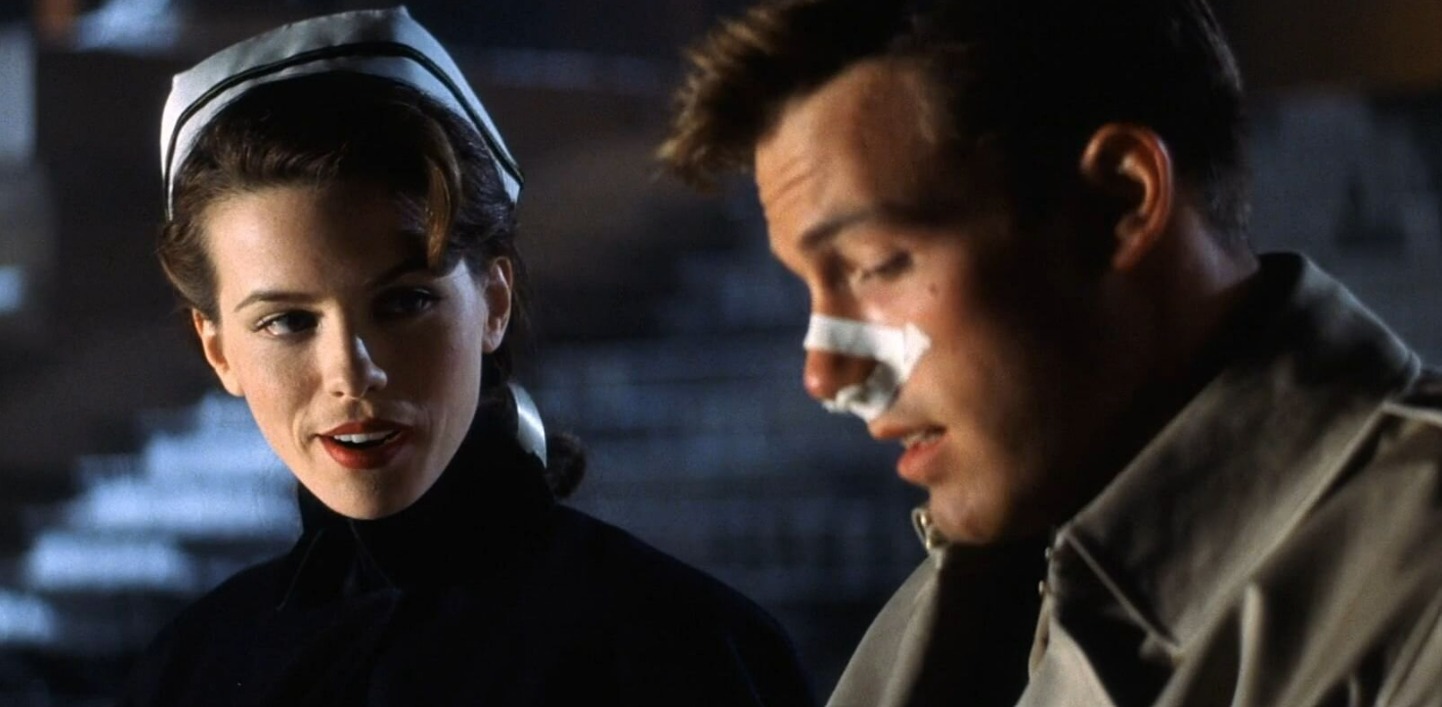
WATCH:
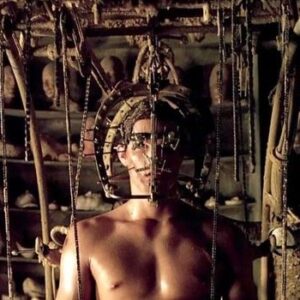
“House of Wax” (2005) is a horror film directed by Jaume Collet-Serra and a remake of the 1953 film of the same name.

The House of Wax
While waiting for Bo, Carly and Wade explore the town and come across the town’s main attraction: the Trudy’s House of Wax, a seemingly quaint wax museum. They soon realize that the wax figures inside the museum are disturbingly lifelike, almost as if they are real people encased in wax. As they delve deeper into the museum and the town, Wade is captured by a masked figure and taken to the basement of the House of Wax, where he becomes the first victim to be gruesomely transformed into a wax statue.
Meanwhile, Bo reveals his sinister nature and attacks Carly, who manages to escape and warn the others. As the group attempts to leave town, they are hunted by Bo and his twin brother Vincent, the masked artist responsible for turning people into wax figures. Vincent is revealed to be a deeply disturbed and deformed individual who was raised by abusive parents who operated the wax museum. The brothers are keeping their dead parents’ legacy alive by luring unsuspecting travelers into their twisted world and turning them into wax displays.

Survival and Terror
The group is soon separated, and a terrifying game of cat and mouse ensues as Bo and Vincent stalk them through the eerie, abandoned town. Paige and Blake are killed in gruesome fashion, while Dalton meets a horrific fate when he stumbles upon Wade’s wax-coated body and is captured by Vincent.
Carly and Nick eventually discover the truth about Ambrose: the entire town is a facade created by the brothers, with every “resident” actually being a wax-encased corpse. The siblings must use their wits and courage to survive as they are relentlessly pursued through the town and the House of Wax itself. In a climactic battle inside the wax museum, they set the building on fire, causing the wax figures and the structure to melt around them.
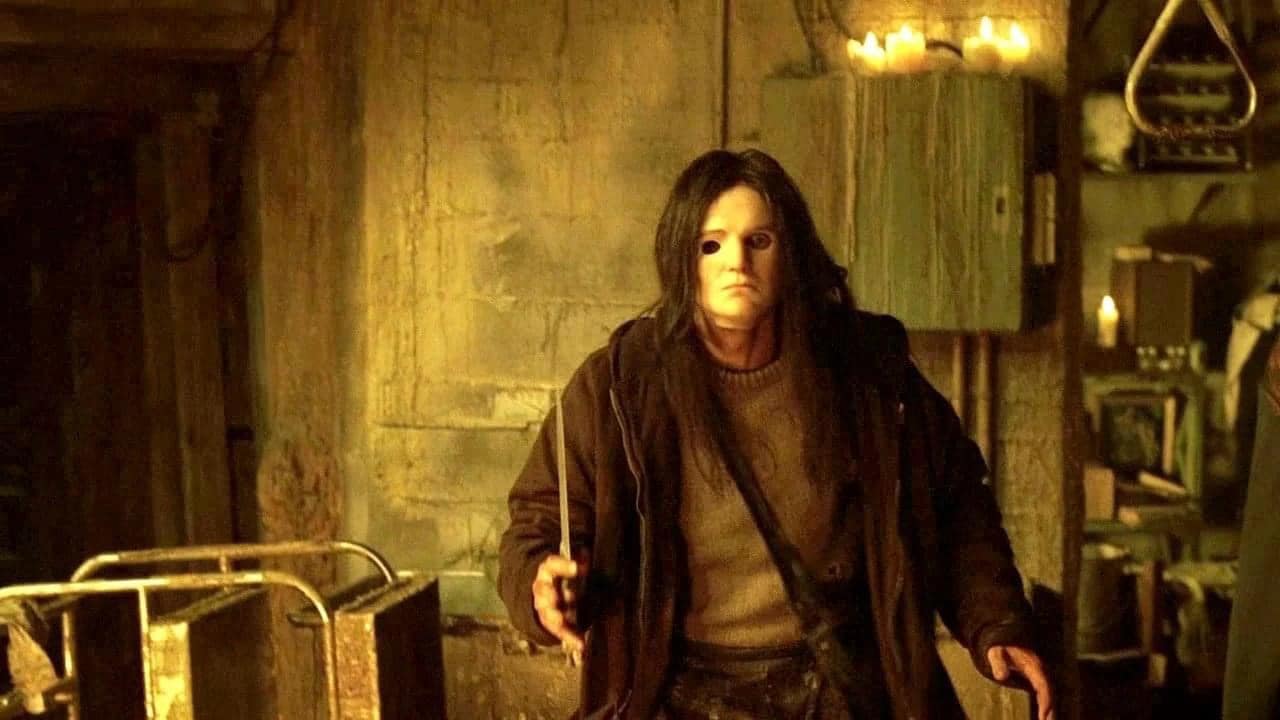
Final Confrontation and Escape
As the House of Wax collapses, Vincent and Bo meet their demise in the inferno. Carly and Nick manage to escape the burning building just in time as the entire structure melts down, revealing the horrifying truth beneath its surface. As the authorities arrive at the scene, Carly and Nick are rescued and taken to safety. The film ends with a chilling twist, as a deputy reveals that Bo and Vincent were not the only family members involved in the gruesome crimes, hinting at a possible accomplice still at large.

Themes and Reception
“House of Wax” (2005) combines elements of psychological horror and slasher genres, exploring themes of identity, family trauma, and the macabre obsession with preservation and perfection. The film is notable for its creative and gruesome special effects, particularly the wax transformations and the melting museum climax. The film was praised for its production design and atmosphere, effectively creating a sense of claustrophobic dread.
While it received mixed reviews from critics, with some praising its campy appeal and others criticizing its reliance on genre clichés, “House of Wax” has since gained a cult following among horror fans for its inventive kills and commitment to practical effects. It stands out as a memorable entry in the early 2000s wave of horror remakes.
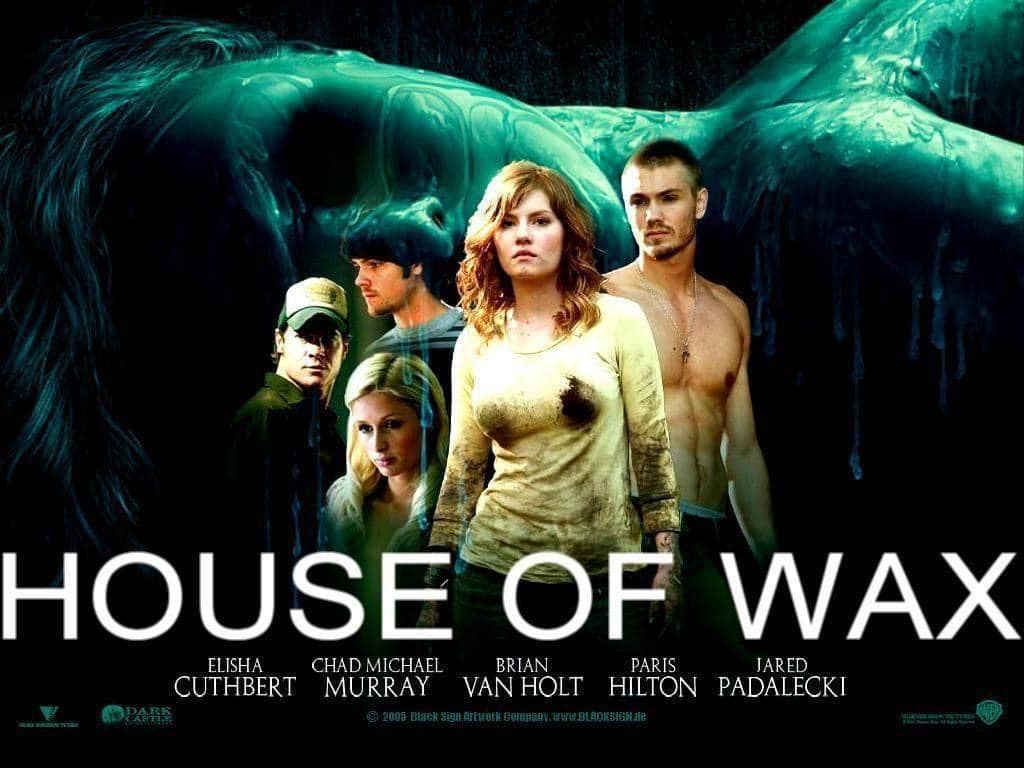
WATCH:
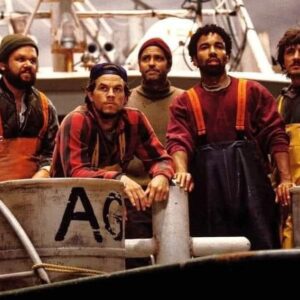
The Perfect Storm (2000) is a disaster drama film directed by Wolfgang Petersen, based on the true story of the 1991 “Perfect Storm” that struck the North Atlantic.
The Perfect Storm (2000) is a gripping disaster drama film directed by Wolfgang Petersen, based on the harrowing true story of the 1991 “Perfect Storm” that struck the North Atlantic. The film, adapted from Sebastian Junger’s non-fiction book of the same name, tells the story of the crew of the Andrea Gail, a commercial fishing vessel caught in one of the most ferocious storms in recorded history.
Set in the small fishing town of Gloucester, Massachusetts, the film follows Captain Billy Tyne (played by George Clooney) and his crew as they struggle with a poor fishing season. Determined to turn their luck around, Captain Tyne convinces his crew—Bobby Shatford (Mark Wahlberg), Dale “Murph” Murphy (John C. Reilly), David “Sully” Sullivan (William Fichtner), Michael “Bugsy” Moran (John Hawkes), and Alfred Pierre (Allen Payne)—to embark on one more late-season fishing expedition to the Flemish Cap, a location rumored to be teeming with fish.

As the crew sets out, they initially find success in their fishing efforts. However, their luck soon takes a turn for the worse when their ice machine breaks down, threatening to spoil their valuable catch. Faced with the decision to head back to port or risk it all and navigate through a developing storm to save their haul, Captain Tyne decides to push forward, hoping to beat the storm back to Gloucester.
Unbeknownst to the crew of the Andrea Gail, a convergence of three weather fronts—a rare phenomenon that would later be dubbed the “Perfect Storm”—is brewing. As they continue their journey, the storm rapidly intensifies, creating monstrous waves and hurricane-force winds that toss the vessel like a toy in a bathtub. The crew battles against the elements with sheer determination and courage, but the storm proves to be an unstoppable force of nature.
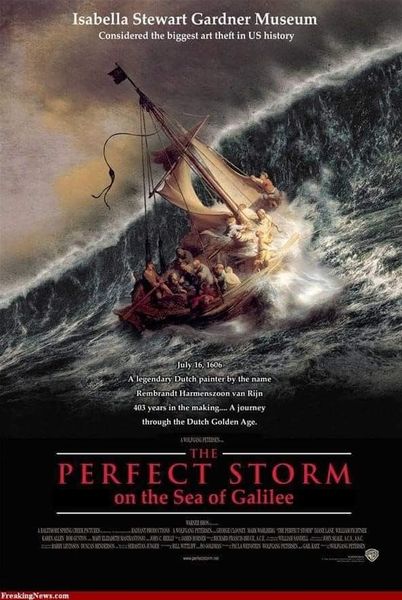
The film expertly captures the tension and desperation of the crew as they fight for their lives in the face of overwhelming odds. The special effects bring the storm’s fury to life, with towering waves and torrential rain creating a visceral, immersive experience for the audience. The bond between the crew members is tested to its limits, and each man confronts his own fears and mortality as the situation grows increasingly dire.

On shore, the families and loved ones of the crew members anxiously await news of their return, grappling with their own fears and uncertainties. The film poignantly portrays the emotional toll that the dangerous lives of fishermen have on their families, adding a deeply human element to the story.

As the storm reaches its peak, the crew makes a final, desperate attempt to navigate the Andrea Gail through the towering waves and back to safety. Despite their heroic efforts, the relentless power of the ocean proves too great, and the ship is ultimately overcome by the monstrous waves, sinking into the depths of the Atlantic.
“The Perfect Storm” is a powerful and emotional tribute to the bravery and resilience of those who risk their lives at sea. The film serves as a stark reminder of the unpredictable and unforgiving nature of the ocean, and the indomitable spirit of the fishermen who face its dangers every day. Through its compelling storytelling, unforgettable performances, and breathtaking visual effects, “The Perfect Storm” captures the raw power of nature and the human spirit’s unyielding will to survive against all odds.

WATCH:
